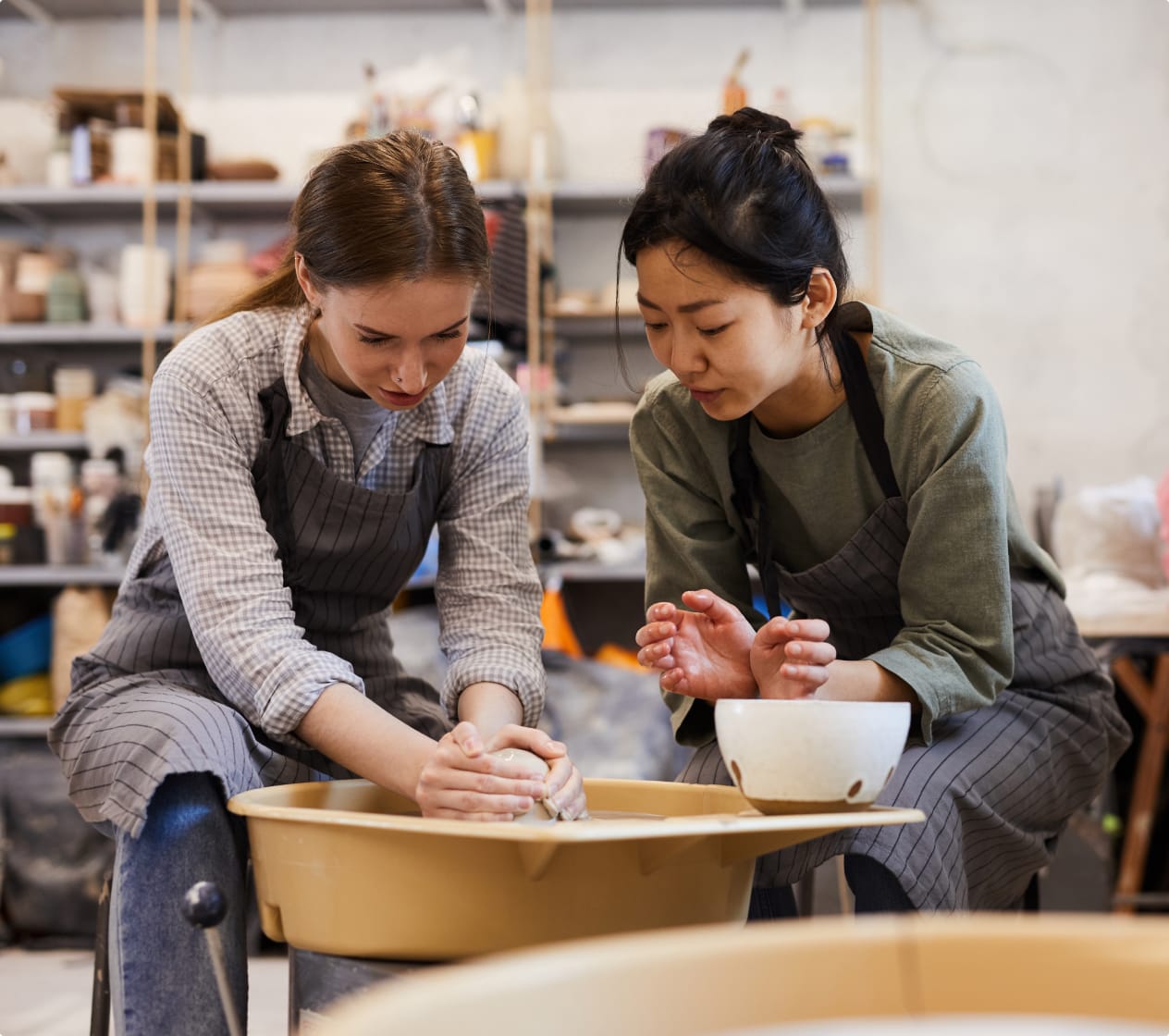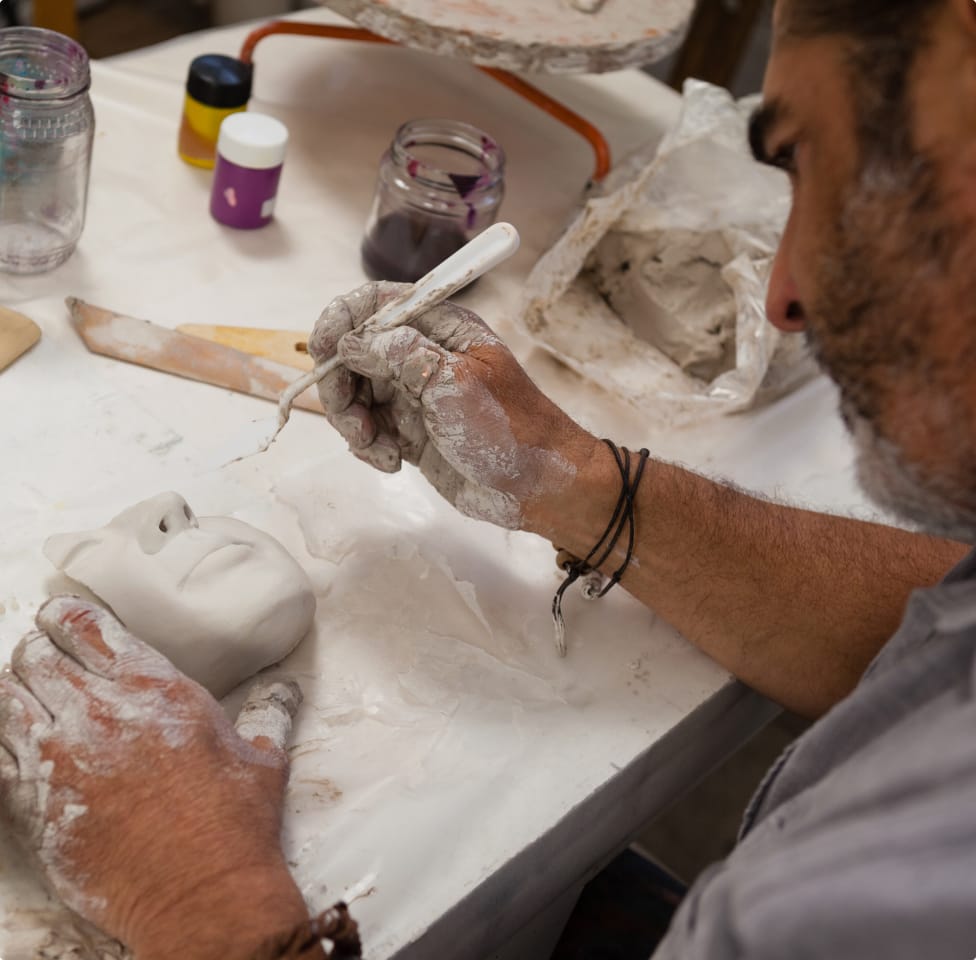Sculptor

Personal Connection
- Can you look at a block of wood or clay and see its potential?
- Do you like to work with clay or other shaping materials?
- Are you passionate about art in its various forms?
- Do you have a knack for taking something bland or simple and turning it into art?
- Do you enjoy experimenting with different art materials and tools?

Other Connections




STEM Connection
Laser-cut sculpting:
3D printers change the name of the game:
Virtual sculpting mimics real-world sculpting:
Metal sculpting made easy(er):
Journeys to Becoming a Sculptor
There’s no one set path to becoming a sculptor. You might know right away that you love art—or not. No matter what path you take, the skills you learn can be applied to sculpting. Take Cristina Cordova, for example. She never considered a career as an artist and started off studying engineering. When she added a few creative courses to her schedule, however, she quickly realized that art was where her interests truly lay. Her engineering knowledge comes in handy when she’s trying to figure out the logistics of creating a large piece, and technology certainly plays a large role in the creative process. In order to have a frame of reference to work with, she incorporates photography and computer modeling.
“...most of my rendering starts with a set of photographs that takes views of the model in the round, and then I will pick from that. I will print out the front and the sides of the model in sections and then tape them together at scale. So if I’m working on something that’s six feet tall, I’ll have the six-foot print outs on the wall next to me, and then the rest of the views I just survey on my computer. So I keep turning them and turning the sculpture as I work.”
Read more about Cristina and her sculpting process.
Read about one sculptor’s advice to students:
Another sculptor, Bruce Gray, advises aspiring artists to explore a variety of courses in both high school and college that can help you succeed in art, both in the creative aspects and on the business side. “You should try to learn things that will help your art career, such as taking a course in marketing, advertising, photography, accounting, website design, wood shop, metal shop, drafting, art class, etc, that will make running your own business much cheaper and easier. If you are thinking of going to college for art, you will be expected to have a decent portfolio, so try to take as many art-related courses as you can.”